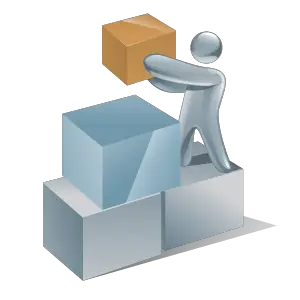Before we begin to understand forward integration, we need first to understand vertical integration because forward integration is essentially a type of vertical integration.
But even before we dive into understanding forward integration, it would be good to a step back to understand Horizontal integration and vertical integration are two types of business strategies that go hand in hand.
Generally speaking, companies looking to expand and grow their business employ either of the two strategies: Horizontal Integration or Vertical Integration.
When a company expands by acquiring a similar company in their industry at the same level of the supply chain, the integration is known as horizontal integration. A large hotel chain buying another chain of hotels, either similar in size to the acquirer or smaller than it would be an example of horizontal integration.
On the other hand, vertical integration is a business strategy wherein a company moves in the direction of occupying operations before or after it in the supply chain, primarily through acquisitions. To give an example, a clothing manufacturer acquiring its raw material supplier or a retail chain that sells its products would be an example of Vertical Integration.
As I stated at the beginning of the article, forward integration is a type of Vertical Integration. If a vertically integrating company acquires a company ahead of it in the supply chain, it is called Forward Integration. A clothing manufacturer acquiring its retail distributor would be an example of Forward integration since the manufacturer is buying out an operator ahead of it in the supply chain. If the clothing manufacturer acquires its raw material supplier, it would be an example of Backward integration because the manufacturer would be buying an operator behind it in the supply chain.
To better understand how Forward Integration exactly works, let’s check out three different examples of the same.
Forward Integration Examples
Farmer Forward Integration
In most cases, farmers sell their produce to distributors responsible for delivering and selling to retailers. Customers then buy the farm produce from the retailer. Suppose the farmers employed a forward integration strategy. In that case, they could cut out the distributor and sell to retailers directly, moving one step ahead in the supply chain. Similarly, cutting out both the distributor and the retailer, selling directly to end customers, would also be an example of Forward integration since the farmer would be moving ahead in the supply chain.
Amazon Forward Integration
Amazon is a textbook example of Forward integration. The company has implemented forward integration in various business functions since its inception. To give one example of the multiple forward integrations in Amazon’s business, the company has built its delivery fleet directly controlling delivery to end users instead of relying on third-party services, making a move forward in the supply chain.
Nike Forward Integration
In 2011, direct-to-consumer sales accounted for 16% of Nike’s revenue. By fiscal 2020, direct-to-consumer sales accounted for 35% of Nike’s revenue. Nike reducing dependence on wholesalers, distributors & retailers, and prioritizing direct-to-consumer sales is an example of Forward Integration. However, in this case, Nike is pursuing a Forward integration strategy without acquiring external players.
Like any business strategy, Forward Integration comes with its own set of advantages and disadvantages. Let’s have a look at both.
Increase in Market Share
When a company moves forward in the supply chain, it helps eliminate various transaction and transportation costs. A by-product of this price reduction is a reduced final product cost, which ultimately helps increase the company’s market share.
Control Distribution
In some markets, there might be a shortage of qualified distributors. Or there might be a lack of distributors, giving the distributors the power to charge more. In such cases, forward integration in the supply chain helps increase control over the distribution channels, reduce product costs and ensure strategic independence from third parties.
Competitive Advantage
Once a company successfully implements forward integration and takes more control over the supply chain, reduced costs and increased control over distributions can lead to a competitive advantage.
Disadvantages of Forward Integration
High Initial Costs
While acquiring a company ahead of its own in the supply chain can be profitable in the long run. Still, the company has to likely shell out a significant amount for the acquisition in the beginning. In some cases, the acquisition might also not turn out to be as advantageous as thought.
Increased Bureaucracy
Acquisitions with the intent of integration forward in the supply chain also lead to increased bureaucracy, leading to inefficiency in the company’s functioning in some cases.
Synergy Failure
We’ve all heard stories where acquisitions turned out to be a disaster. One common reason for such disaster stories is the inability of the companies to achieve synergy for the greater good. Even if done with positive intent, an acquisition based on capitalizing on the benefits of forward integration might turn out to be a disaster if the two entities fail to achieve synergy.
Read More Business Concepts
![Forward Integration [ Definition, Examples, ADV & Disad ]](https://whatisthebusinessmodelof.com/wp-content/uploads/2021/08/ForwardIntegrationExamples.png)
